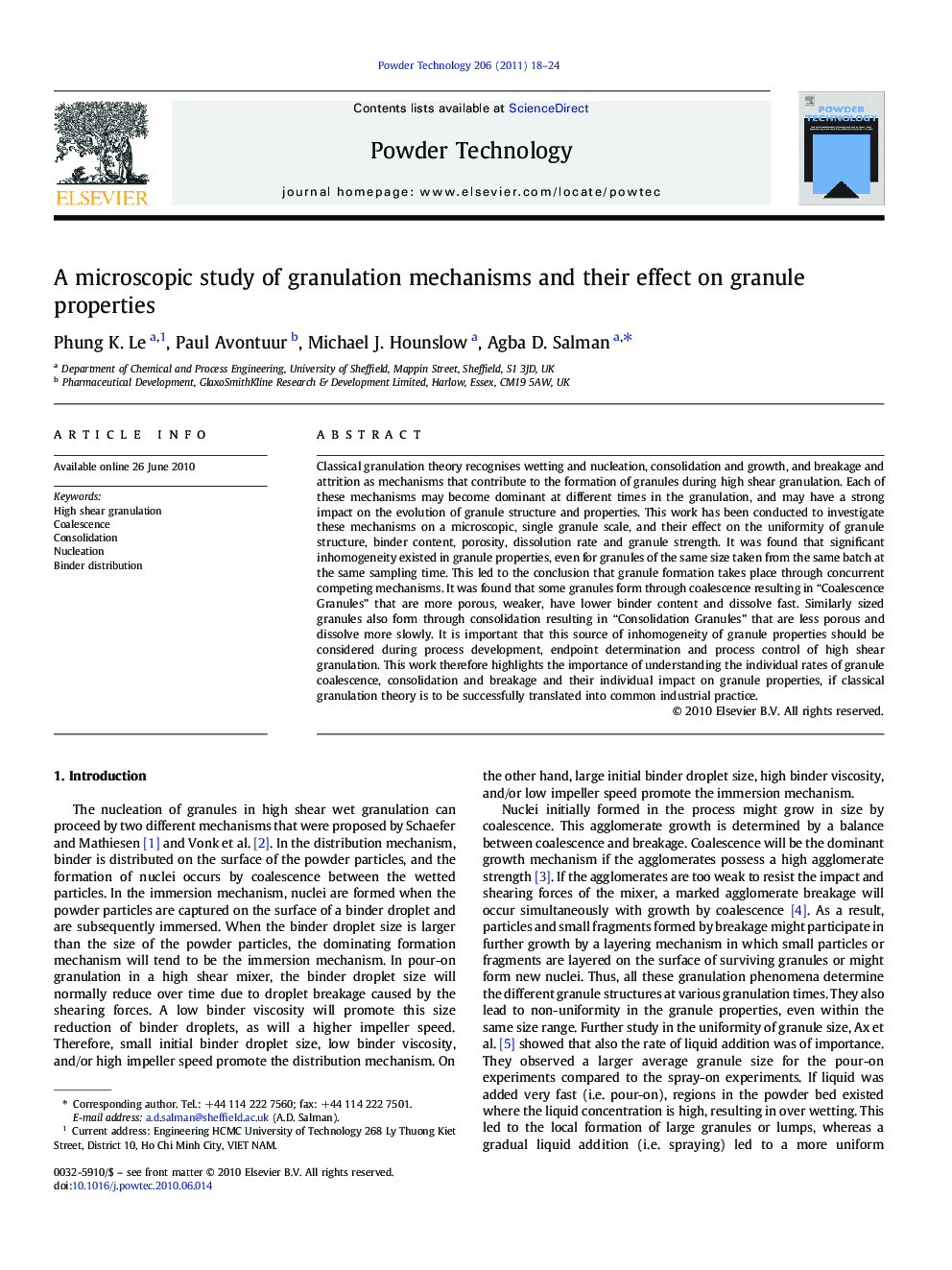| کد مقاله | کد نشریه | سال انتشار | مقاله انگلیسی | نسخه تمام متن |
|---|---|---|---|---|
| 238073 | 465740 | 2011 | 7 صفحه PDF | دانلود رایگان |

Classical granulation theory recognises wetting and nucleation, consolidation and growth, and breakage and attrition as mechanisms that contribute to the formation of granules during high shear granulation. Each of these mechanisms may become dominant at different times in the granulation, and may have a strong impact on the evolution of granule structure and properties. This work has been conducted to investigate these mechanisms on a microscopic, single granule scale, and their effect on the uniformity of granule structure, binder content, porosity, dissolution rate and granule strength. It was found that significant inhomogeneity existed in granule properties, even for granules of the same size taken from the same batch at the same sampling time. This led to the conclusion that granule formation takes place through concurrent competing mechanisms. It was found that some granules form through coalescence resulting in “Coalescence Granules” that are more porous, weaker, have lower binder content and dissolve fast. Similarly sized granules also form through consolidation resulting in “Consolidation Granules” that are less porous and dissolve more slowly. It is important that this source of inhomogeneity of granule properties should be considered during process development, endpoint determination and process control of high shear granulation. This work therefore highlights the importance of understanding the individual rates of granule coalescence, consolidation and breakage and their individual impact on granule properties, if classical granulation theory is to be successfully translated into common industrial practice.
This work studied the granulation mechanisms on a microscopic, single granule scale. The significant in-homogeneity that existed was found in granule properties such as granule structure, binder content, porosity, dissolution rate and granule strength, even for granules of the same size taken from the same batch at the same sampling time.Figure optionsDownload as PowerPoint slide
Journal: Powder Technology - Volume 206, Issues 1–2, 18 January 2011, Pages 18–24